Podcast: Play in new window | Download
 Easter in Italy
Easter in Italy
Last year we did a whole podcast covering some of the strange and mysterious customs we’ve experienced in Italy during holy week. You can find that here: https://livingvillacappelli.com/easter-in-italy/
This year, we sat down with Paul’s mother so she could tell us how they used to celebrate Easter when she was young. She shares some recipes, memories and laughs.
Here’s a list of all we talk about:
Ragu sauce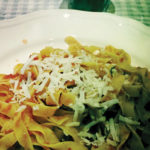
Connie describes her famous ragu sauce recipe. You’ll find that here: https://livingvillacappelli.com/connie-cappellis-ragu/
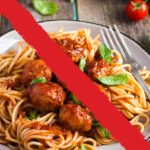 No Meatballs!
No Meatballs!
Connie confirms our no meatballs and spaghetti rule the we talked about here: https://livingvillacappelli.com/032-traditional-italian-food-what-not-to-do-when-it-comes-to-cooking-eating-italy/
Stuffed Lamb or Veal Breast
I will be following up with a real recipe with pictures and a video here. But here’s the recipe as Connie describes it. If you listen, you’ll see why we say “recipes are dumb” as no Italian grandmother will ever give you exact amounts.
The stuffing ingredients include mortadella or ham (no prosciutto as it will taste rancid when cooked), eggs, grated Pecorino Romano, bread crumbs, parsley, a little salt and pepper. The stuffing will be rather thick, as you need to actually stuff it into the meat.
The cut meat is a some of the ribs with a little bit of the belly. The hole is cut into the side along the belly (when I get pictures, that will help explain this).
Cuttlefish
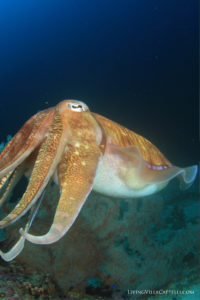 Connie explains you can used the exact same stuffing to make Stuffed Cuttlefish.
Connie explains you can used the exact same stuffing to make Stuffed Cuttlefish.
What she doesn’t explain is they will stuff the cuttlefish and tie them up, and then cook in a tomato sauce. You would eat the sauce on pasta, and the cuttlefish as second.
This was eaten on Friday because you could NOT eat meat on Easter Friday at all.
What the heck is cuttlefish?
If you don’t know what a cuttlefish is, it’s essentially a cousin of squid or calamari. Here’s a nice article about cuttlefish.
When you are eating them, they look and taste pretty much like calamari. Honestly, most people wouldn’t be able to tell the difference. The cuttlefish is just thicker and meatier.
Paul explains that in Italian, they are called seppia (which I just discovered is very close to their scientific order name Sepiida). The cuttlefish excrete a unique brown pigment when it is alarmed. And that is how we get the word “sepia” which refers to the brown pigment color in English.
The bone found in them distinguishes them from their squid relatives. This is the bone you’ll find in bird cages.
Dialect
How Paul’s mother speaks four different languages: English, Italian, the local Terlizzi dialect and a version of the dialect which is a mix of dialect and English. She gives a lot of fun examples in the podcast.
Scarcella
A fun Easter dessert in the shape of a basket with an egg on top. I have not personally seen this my self here, but I’m sure you’ll still find them in many homes and bakeries.
Pasquetta (Little Easter)
This is the Monday after Easter. It is a very big celebration in Italy. Almost as big as Easter itself.
In Connie’s time, the would pack up all the leftovers and head to the country and have a big picnic with the leftovers.
The real Mediterranean diet with lots of fish and little meat
We talk about how back in Connie’s time, they used to eat what is probably a 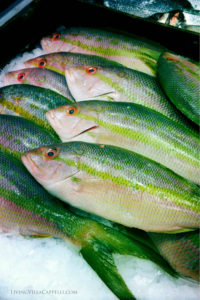 much truer Mediterranean diet than today.
much truer Mediterranean diet than today.
Almost every day they would eat fish, and meat was maybe served on Sunday. Even then, it was a pound of meat for five people just to flavor the sauce for your pasta.
They would have a lot of vegetables, nuts, and olives. Junk food didn’t exist and celery was a snack. Would this be nice again!
The Procession
The depressing parade that’s been going on in town for years. He covered a lot of this in last year’s podcast again, which you’ll find here: https://livingvillacappelli.com/easter-in-italy/
Here’s a quick video of it as well.
Why Italians do not eat on the go
There are a couple of reasons.
First, meals are important family time. Everyone sits around the table and eats together, even if now the TV is on and they are all on their phones. They are still eating together at home.
Second, as Connie points out in the podcast, it’s stems a bit from the idea that you don’t want to “show off” your food to your neighbors.
Some people, especially when she was growing up, couldn’t afford much if any food. So her father never wanted her or her siblings to be eating even a fruit outside the home as it would make others feel bad that they didn’t have that.
How important family was and still is in Italy
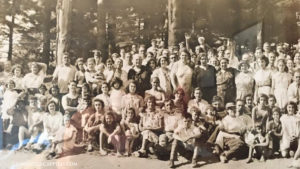 Connie talks about how important and close her family is. How now cousins who are forth generation act like brothers and sisters creating one large, supportive family.
Connie talks about how important and close her family is. How now cousins who are forth generation act like brothers and sisters creating one large, supportive family.
And in the end, isn’t that what Easter should be all about?
So that’s our Easter in Italy. Do you have other traditions you and your family follow? We’d love to hear about them in the comments below!
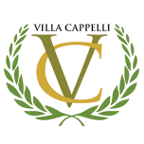
















We eat at an Italian Restaurant in DC called Filomena. The menu from the Abruzzo region of Italy. They have the grandmas making pasta in the back and the place is completely decked out for Easter.
Sounds great!
Comments are closed.